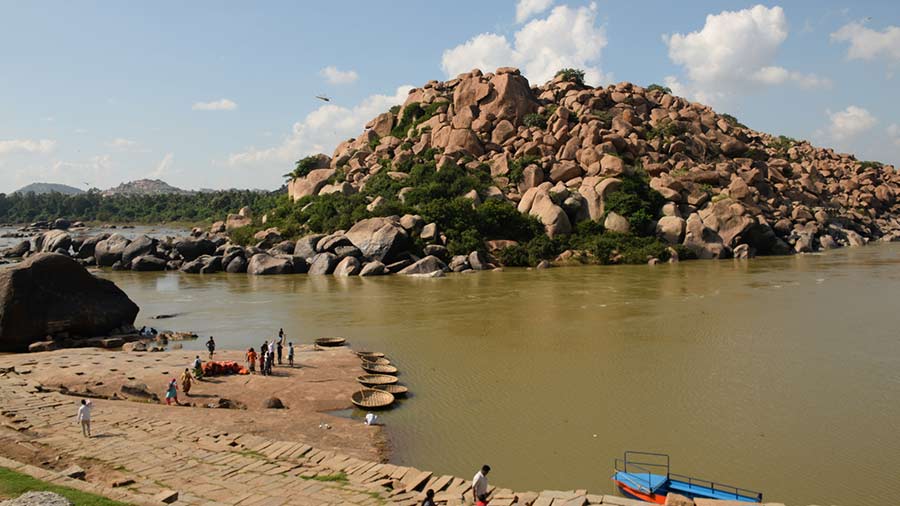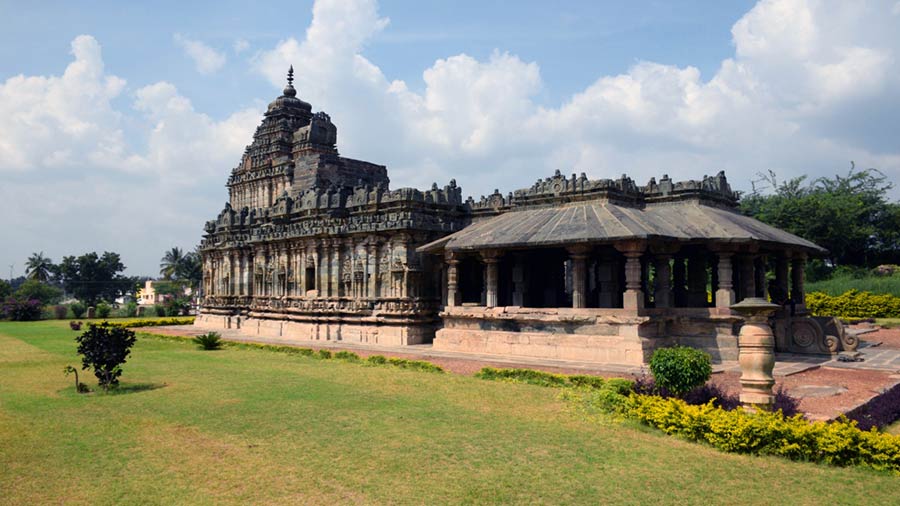The debate whether the king of Ayodhya, Ram, is a mythical character or a real-life ruler can run on for hours. Whether you are religious or not, you will have tales of the Ayodhya king’s adventures accompany you through the journey as you explore the artefacts and built heritage of Hampi and nearby Anegundi in Karnataka. From Rishyamuk Parbat to King Bali’s cave, local folklore connects many spots to the stories in the Ramayana.
Hampi is famous for being the capital of the 14th century Vijayanagara Empire and many overlook its Ramayana connection. Primarily known for temples of Shiva, in the form of Lord Virupaksha, Hampi also boasts of as many as four temples connected to Ram.
As per the local folklore, Anegundi was the mythological kingdom of Kishkinda. The place predates Hampi by many years. Asoka’s rock edicts in Bellary district’s Nittur and Udegolam villages suggest that this region was part of the Maurya Empire during the third century BC.
In one of the earliest narrations about the Vijayanagara empire in the book The Vijayanagar Empire by Portuguese duo Domingos Paes and Fernao Nuniz, it is mentioned that “in former times this land belonged all to the monkeys, and those days they could speak.”
These are the sites in and around the ancient capital city of Hampi that are attached to folklore and the legends of Ram.
Kodanda Rama Temple, Hampi
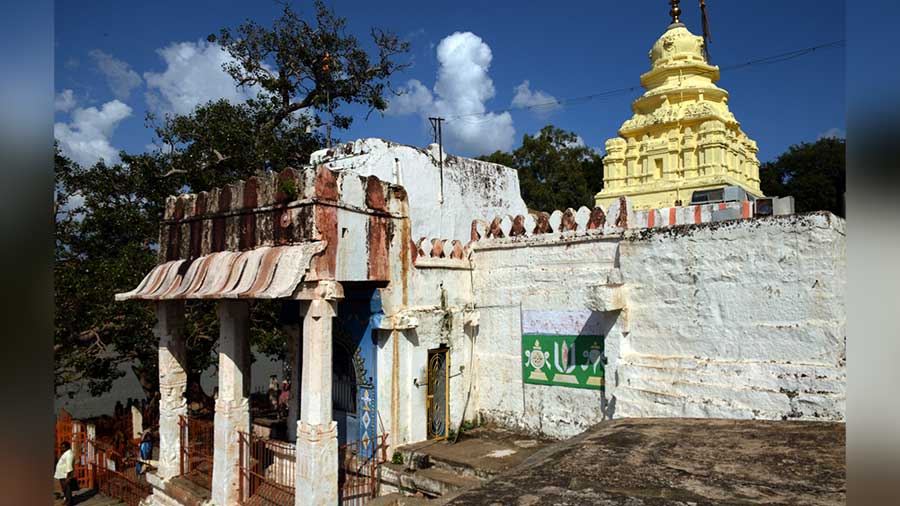
Kodanda Rama Temple
Located on the banks of Tungabhadra river, the Kodanda Rama Temple at Hampi stands on the eastern side of Chakratirtha — a swirl of water regarded as a holy place for worship on the river. The folklore goes that once Vali (or Bali) the Kishkinda king and ruler of the vanars, was defeated and killed, Ram crowned Sugriva king at the location of this temple. It also houses 15-foot tall figures of Ram, Sita and Lakshman carved out from a single natural boulder.
Yantrodharaka Anjaneya Prana Devaru temple, Hampi

The Yantrodharaka Anjaneya Prana Devaru Temple stands close to the boulders on the banks of the Tungabhadra
Close to Kodanda Rama temple, stands the Yantrodharaka Anjaneya Prana Devaru Temple dedicated to Hanuman. The temple is on the other side from the Rishyamukh hill and legend says, this is where Hanuman met Ram for the first time. The inner sanctum of the temple has an image of Hanuman enclosed within a hexagonal amulet carved on a stone, surrounded by the figurines of 12 stone-carved monkeys.
Matunga Hill, Hampi

Matunga Hill
Close to the Kodanda Rama temple, Matunga Hill is known to be the place where monkey king Sugriva took refuge after he was chased away from the kingdom by his brother Vali. Vali was cursed by Sage Matunga, who forbade him to visit this hill.
Sugriva’s cave

Sugriva’s cave
There is a narrow sanctum in between the rocks, about 600m northeast of Kodanda Rama Temple, which is supposed to be Sugriva’s cave. According to folklore, Sita dropped her jewels from Ravana’s chariot, when she spotted Sugriva on the ground at this cave.
Vali’s cave and fort, Anegundi

Vali’s cave and fort
The gates of the fabled fort of Vali seem to be between the 15th and 16th centuries during the Vijayangara empire. There is a small sculpture of a monkey on the gate, which probably gave birth to this legend. The cave inside is believed to be the site where the battle between Vali and Dundhubi’s son Mayavi took place, while Sugriva stood guard outside.
Pampa Sarovar, Anegundi
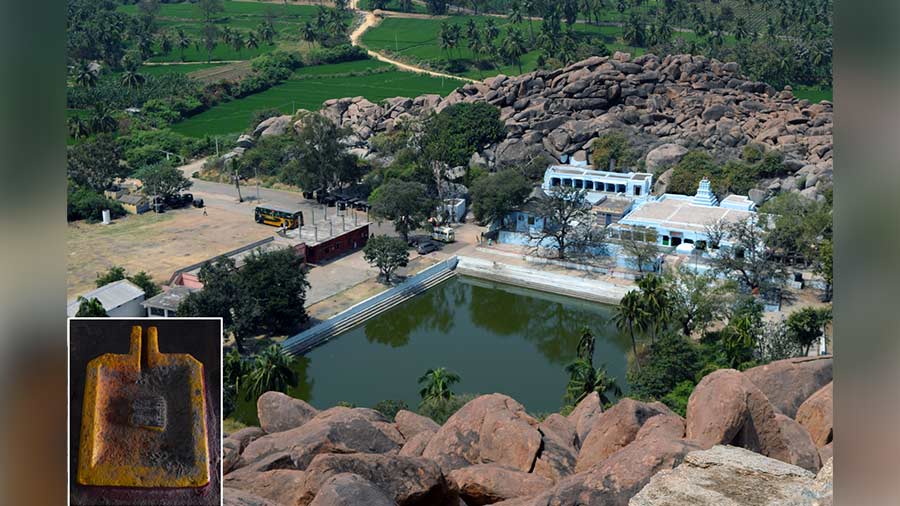
The Pampa Sarovar and (inset) the footprints inside
Around the lake named Pampa Sarovar are temples dedicated to Shiva and Lakshmi. Besides the temples, there is a cave and according to folktales, this was the place where Shabari, a disciple of sage Matunga and a pious devotee of Ram, met her lord. The story of Shabari offering berries to Ram is an oft-heard one. Inside the cave is enshrined an engraving of footprints, which are supposed to be of the great king.
Anjanadri hill, Anegundi

Anjanadri hill
Anjanadri hill looms over its surroundings and is visible from any part of Anegundi. There is a rather modern looking temple at the top housing a statue of Hanuman engraved in a rock and can be reached after a steep climb of over 500 stairs. Local folklore says this hill is the birthplace of Hanuman.
Chintamani temple complex, Anegundi
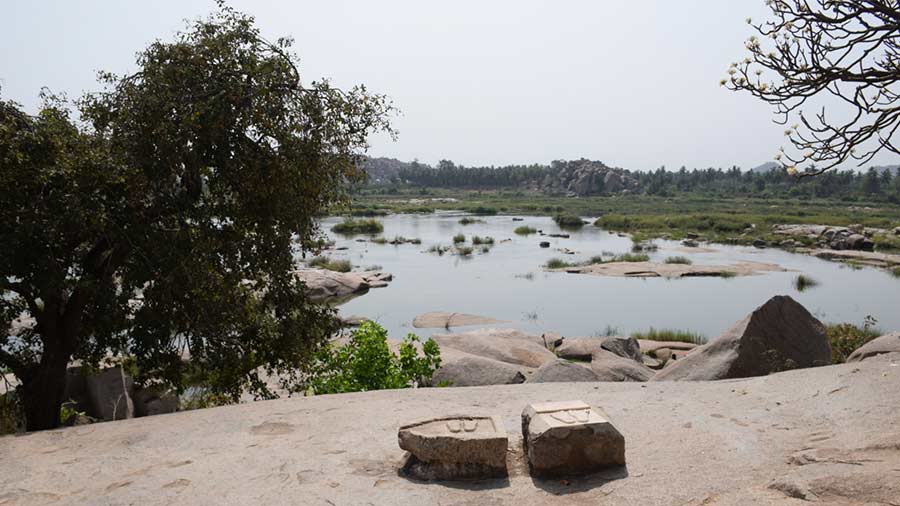
The footprints outside the cave where Sugriva is believed to have first met Ram
Located near Tungabhadra, the Chintamani temple complex Anegundi houses a Shiva temple and the cave where Sugriva met Ram for the first time and handed over Sita’s jewels. There are footprints engraved outside the cave. Local guides describe the old footprints as the actual place where Ram stood and shot Vali.
Nava Brindavana, Anegundi
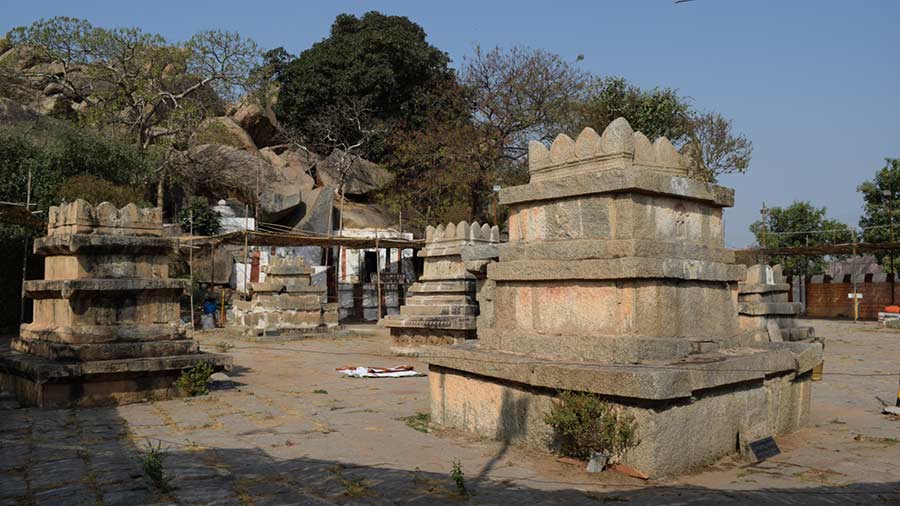
Nava Brindavana
On an island close to the Chintamani complex is Nava Brindavana. This is one the most important and holy spots for Madhva Brahmins, as it is the final resting place of nine Madhva saints including Vyasaraja (or Vyasatirtha). Local legend says while in pursuit of Sita, Ram had pointed this island to Lakshman and asked him to show respect, predicting that it would be a holy place in the future.
Malyavanta Hill and Raghunatha Temple

It is believed that Lakshman used his arrow to create the fissure on the hill to store water
According to mythology, it was atop Malyavanta hill at Vijayanagara that Ram and his brother Lakshman waited out the four months of monsoon before they marched towards Lanka with their vanar sena to rescue Sita.
On the hill, beside an old Shiva temple, there is a fissure on the open ground, which is filled with water. It is believed Lakshman created this fissure using his arrow to store water. There is also the Malyavanta Raghunatha temple dedicated to Ram. The statue shows Ram, Lakshman and Sita in a sitting posture with a kneeling Hanuman in front.
Hazara Rama Temple

The outer walls of Hazara Rama Temple
Located centrally in Hampi, the Hazara Rama Temple was initially built during the reign of King Deva Raya I (1406-1422). Further additions were made to the temple in the 16th century. The external wall of the temple is adorned with meticulously detailed sculptures showcasing events from the Ramayana and Krishna Lila.
Pattabhirama Temple

Pattabhirama Temple
Pattabhirama Temple at Kamalpura in the outskirts of Hampi was presumably built in 1540 during the legacy of Achyutraya. There are several sculptures of Ram and several forms of Vishnu and Hanuman on its pillars.
A trip to Hampi and Anegundi can be very rewarding for anyone looking to trace the legends of the king of Ayodhya.
